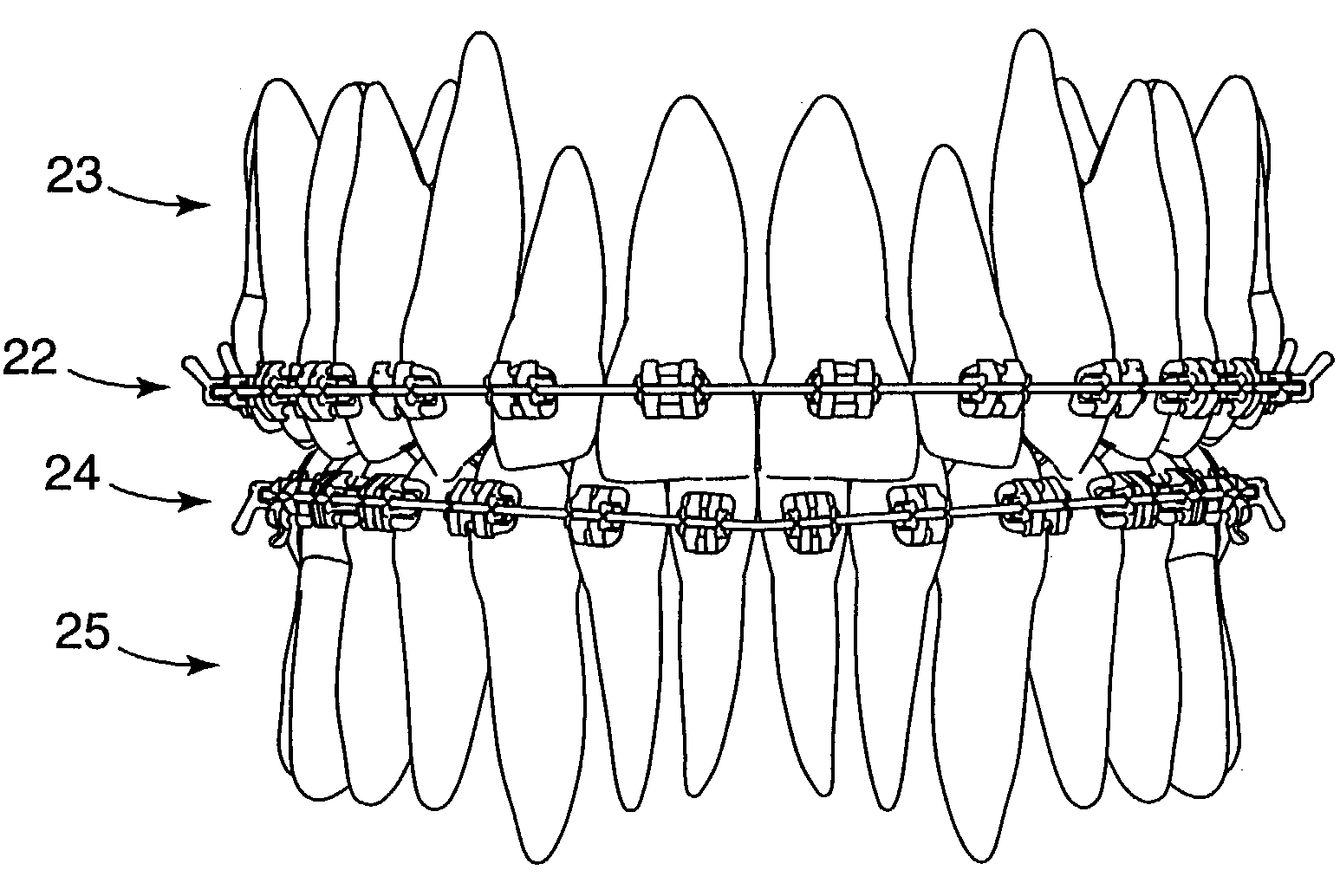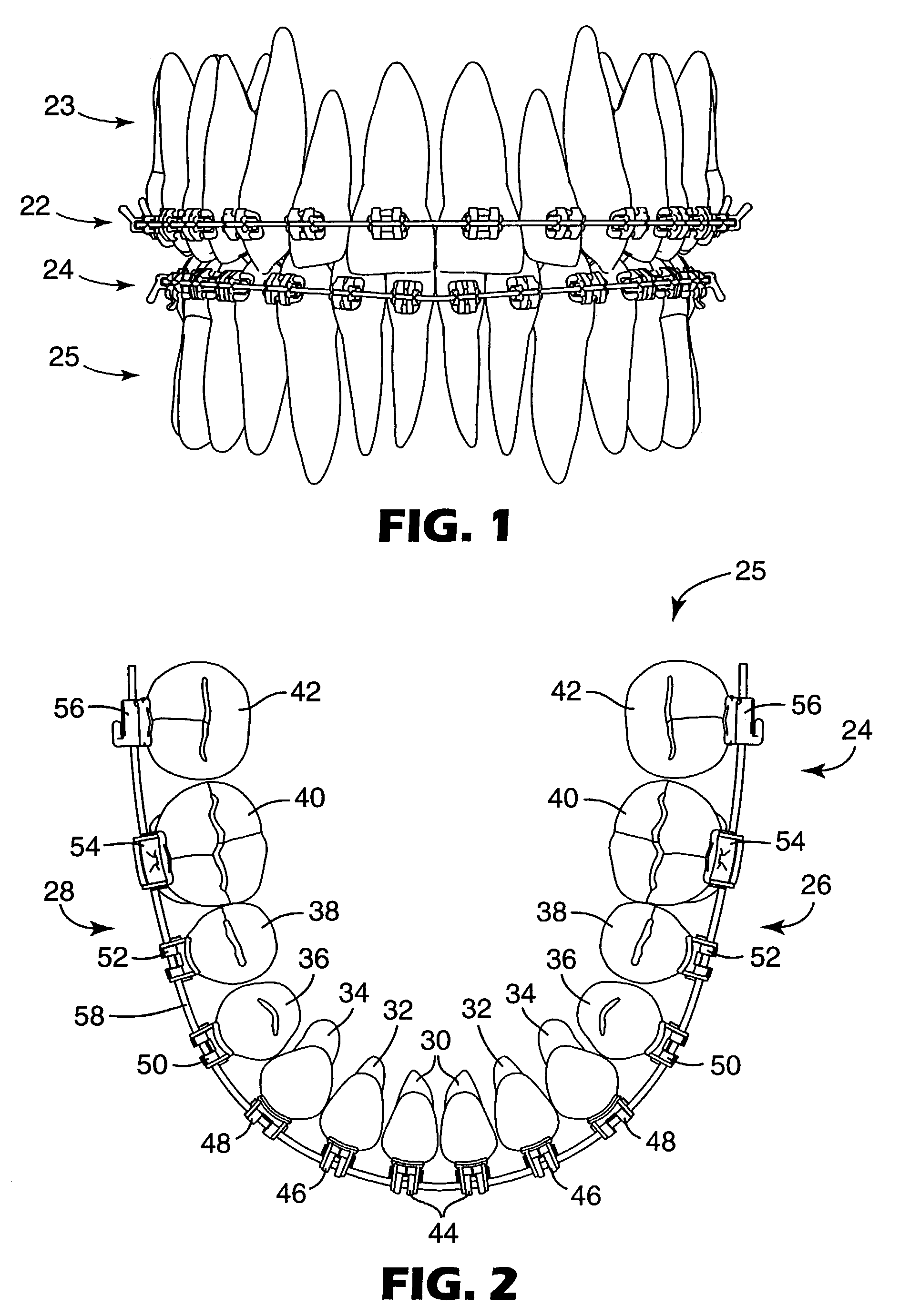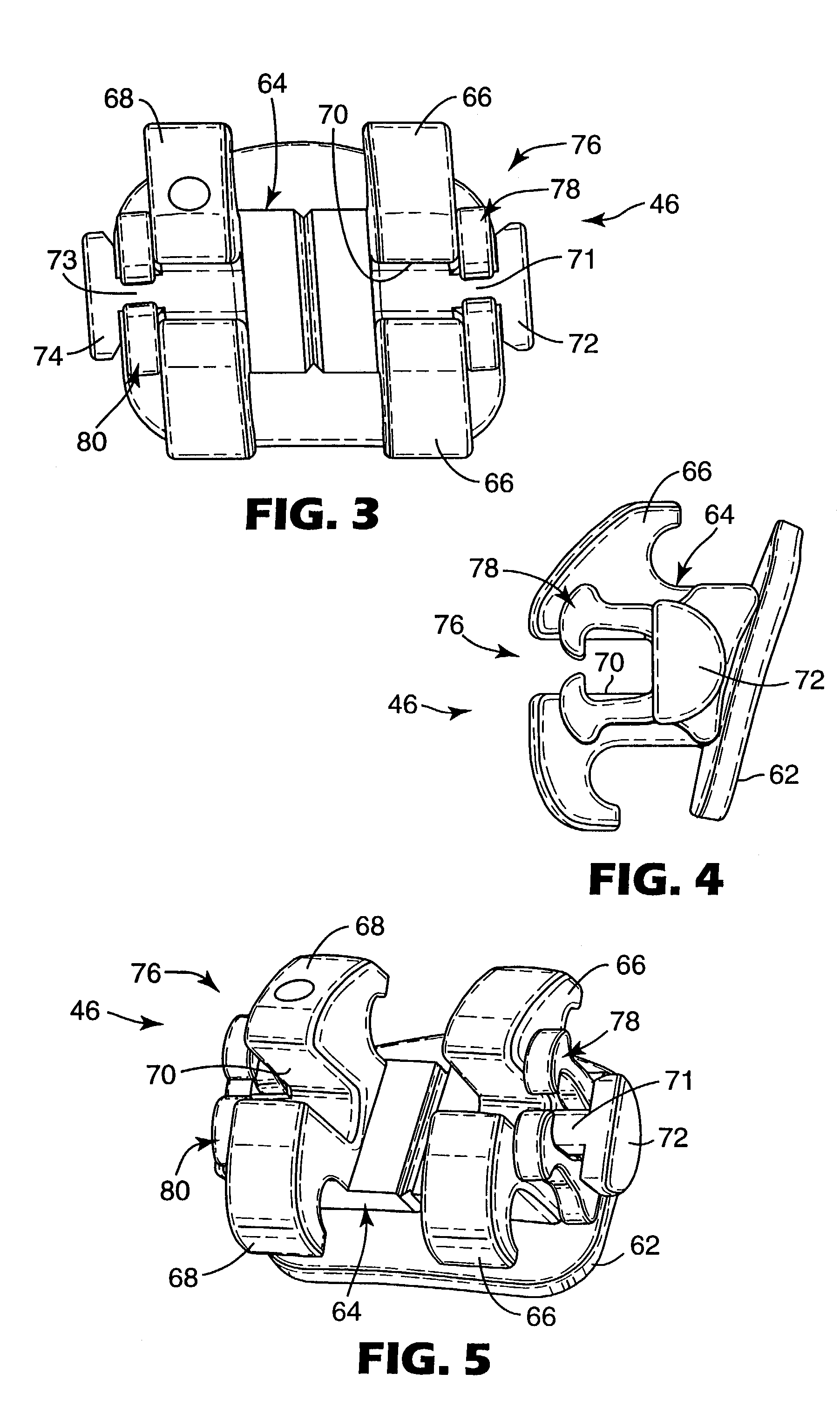Orthodontic brace with self-releasing appliances
a self-releasing, brace technology, applied in dental surgery, dental tools, medical science, etc., can solve the problems of elastomeric and metal ligatures that are not entirely satisfied with orthodontic braces, disadvantages of elastomeric and metal ligatures, and time-consuming installation of ligatures, so as to achieve the effect of improving orthodontic braces
- Summary
- Abstract
- Description
- Claims
- Application Information
AI Technical Summary
Benefits of technology
Problems solved by technology
Method used
Image
Examples
Embodiment Construction
[0042]FIG. 1 illustrates an example of an oral cavity of an orthodontic patient who is undertaking orthodontic therapy. The patient has a first orthodontic brace 22 that is connected to the teeth of the upper dental arch 23 and a lower orthodontic brace 24 that is connected to the teeth of the lower dental arch 25. Each brace 22, 24 includes a set of orthodontic appliances along with an archwire that is received in slots of the appliances, as will be described in more detail below.
[0043]FIG. 2 is an enlarged view of the lower dental arch 25 along with the lower brace 24, looking in a downwardly direction toward the outer or occlusal tips of the teeth. The lower dental arch includes a left quadrant 26 and a right quadrant 28. Each of the quadrants 26, 28 includes a central incisor tooth 30, a lateral incisor tooth 32, a cuspid tooth 34, a lower first bicuspid tooth 36 and a second bicuspid tooth 38. In addition, each of the quadrants 26, 28 includes a first molar tooth 40 and a secon...
PUM
 Login to View More
Login to View More Abstract
Description
Claims
Application Information
 Login to View More
Login to View More - R&D
- Intellectual Property
- Life Sciences
- Materials
- Tech Scout
- Unparalleled Data Quality
- Higher Quality Content
- 60% Fewer Hallucinations
Browse by: Latest US Patents, China's latest patents, Technical Efficacy Thesaurus, Application Domain, Technology Topic, Popular Technical Reports.
© 2025 PatSnap. All rights reserved.Legal|Privacy policy|Modern Slavery Act Transparency Statement|Sitemap|About US| Contact US: help@patsnap.com



